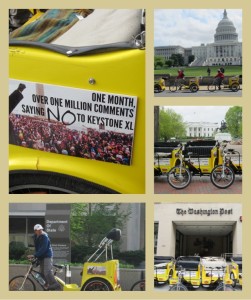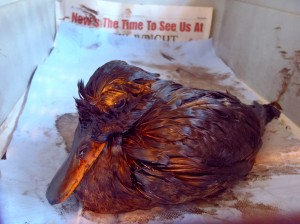We have much more to do and your continued support is needed now more than ever.
More than One Million Strong Against Keystone XL
In his Earth Day proclamation, President Obama said “nothing is more powerful than millions of voices calling for change.” Yesterday, we did just that.

KXL Opponents Make Voices Heard
Following the close of the 45-day public comment period on the Draft Environmental Impact Statement (DEIS) of the Keystone XL tar sands oil pipeline, more than one million comments—including nearly 100,000 from National Wildlife Federation supporters—were delivered to the U.S. State Department. These messages came from Americans from all across the country and all walks of life, but they carried one common message: that this risky and unnecessary project puts our wildlife, water, land, and communities in jeopardy, and President Obama and Secretary Kerry should reject it.
This impressive total follows hundreds of opponents that testified—including ranchers, farmers and landowners who would be directly impacted by the pipeline—at the State Department’s lone public hearing last week in Grand Island, Nebraska, despite a spring storm that brought sleet and snow. And earlier this year, more than 40,000 people descended on our nation’s capital to call for bold action by President Obama to tackle the climate crisis and reject Keystone XL.
The EPA Weighs In
Echoing these same serious concerns, yesterday, the Environmental Protection Agency (EPA) released its own comments on the DEIS, giving the project a score of 2—meaning “insufficient” – and rating the environmental impact of Keystone XL as “environmentally objectionable.” In a letter to the State Department, the EPA urged State to conduct a more thorough analysis of oil spill risks and alternative pipeline routes, as well as greenhouse gas emissions that will result from increased tar sands production.

Just earlier this month, the pipeline rupture in Arkansas that spilled at least 210,000 gallons of tar sands oil—forcing evacuations, and leaving wildlife coated in toxic oil and struggling to survive—raised new concerns about pipeline safety and the risks associated with transporting corrosive tar sands oil. The Keystone XL tar sands pipeline would carry almost nine times as much tar sands oil per day as the pipeline that burst in Arkansas.
What’s Next
Now, the State Department will incorporate comments from the public and federal agencies and release their final environmental report this summer, at which point President Obama will have 90 days to determine whether or not Keystone XL is in the national interest.
While momentum is on our side, the fight doesn’t stop here. Keep an eye out for upcoming opportunities to speak up against the Keystone XL pipeline this summer, as well as more ways you can take action to protect wildlife from dangerous tar sands oil.
Tweet it! 45 days, 1 million comments, 1 movement. The message #NoKXL couldn’t be clearer to @barackobama: Reject #KeystoneXL!





















